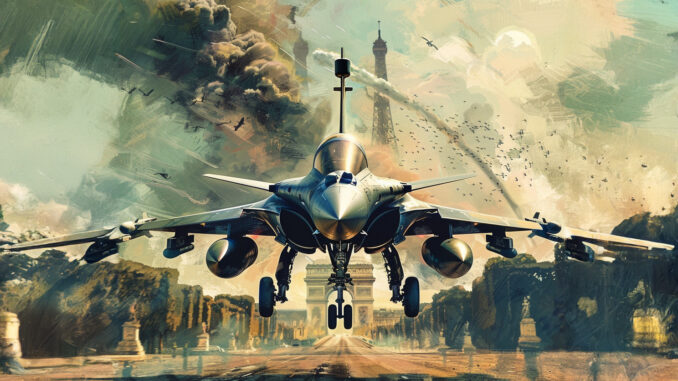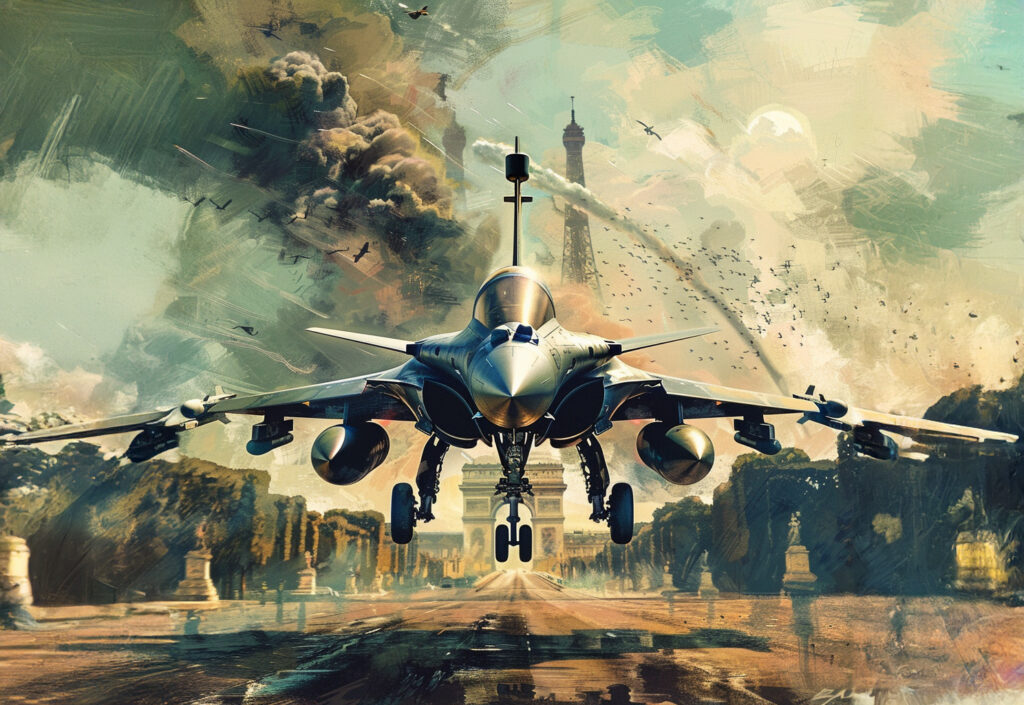
The Indian Navy could pay double the initial price of Rafales to acquire 26 marine jets from Dassault Aviation, according to a recent report.
Understand in 2 minutes
In December 2023, France responded to India’s tender to purchase 26 Rafale Marine jets for the INS Vikrant and INS Vikramaditya aircraft carriers. A report suggests that these jets could cost almost double the price paid by the Indian Air Force (IAF) in 2016 for 36 Rafales. Despite an estimated cost of $6 billion (around €5.5 billion) for these new aircraft, ancillary costs could be reduced thanks to the infrastructure already in place for the IAF’s Rafales. Negotiations are underway and should be concluded by the end of the fiscal year.
The cost of Rafales for the Indian Navy
In December 2023, France submitted a bid to supply 26 Rafale Marine jets to the Indian Navy to equip the aircraft carriers INS Vikrant and INS Vikramaditya. However, a report indicates that the cost of these aircraft could be almost double that paid by the Indian Air Force (IAF) in 2016 for 36 Rafales. The estimated cost of the new acquisition is around $6 billion (€5.5 billion), according to defense experts quoted by Businessworld newspaper.
In 2016, the IAF had purchased 36 Rafales for a base price of $84 million (around €78 million) per aircraft, or a total of €3.5 billion. However, the total contract, including spare parts, simulators, training and performance-based logistics, came to around 8 billion euros. This significant difference in costs raises questions about the reasons for this increase for the Rafale Marine.
Details and implications of ongoing negotiations
Negotiations between India and France for the acquisition of the Rafale Marine began recently. Defense industry officials have confirmed that French representatives will meet their counterparts from the Indian Ministry of Defense to discuss the details of the contract. The aim is to finalize negotiations and sign the agreement by the end of the fiscal year.
One of the critical aspects of the negotiations is the potential reduction in ancillary costs. Experts suggest that by adopting a model similar to France’s, where the Navy and Air Force share Rafale maintenance and storage facilities, India could make significant savings. Currently, the IAF has two Rafale squadrons with storage facilities and simulators already in place, which could be used for the Rafale Marine.

Reduced ancillary costs and economic benefits
The Rafale Marine purchase could benefit from reduced ancillary costs thanks to the existing infrastructure. In 2016, additional costs for spare parts, simulators and training had added significantly to the total contract price. However, as the IAF already has these facilities, the Indian Navy could avoid some of these costs for the 26 new jets.
For example, if India adopts a common maintenance and storage strategy for the IAF and Navy Rafales, this could reduce overall program expenditure. Centralizing maintenance services would also optimize the use of resources and reduce repair and maintenance times. In addition, the IAF’s experience with the Rafale could facilitate the training and integration of the new aircraft into the Indian Navy’s fleet.
Economic analysis and impact on defense
The purchase of the Rafale Marine represents a strategic investment for the Indian Navy. In addition to enhancing the combat capabilities of the INS Vikrant and INS Vikramaditya aircraft carriers, these aircraft would strengthen India’s position as a maritime power. The Rafale Marine is capable of multi-purpose missions, including air superiority, ground attack and reconnaissance, making it a valuable asset for national defense.
However, the high cost of these aircraft raises questions about the economic viability of this acquisition. With a limited defense budget, India has to balance its investments between different branches of the armed forces and modernization projects. Optimization of ancillary costs and efficient use of existing infrastructure will be crucial to justify this investment.
Future prospects and strategic implications
The acquisition of the Rafale Marine could have significant strategic implications for India. By strengthening its embarked air fleet, India improves its ability to project maritime power in the Indian Ocean and beyond. The acquisition could also strengthen the defense relationship between India and France, paving the way for future collaboration in other areas of military technology.
The Rafale Marine purchase represents a significant financial challenge for the Indian Navy, but also offers strategic and operational opportunities. Successful negotiations and the implementation of cost-cutting solutions will be essential to maximize the benefits of this investment and strengthen India’s defense capability.
War Wings Daily is an independant magazine.